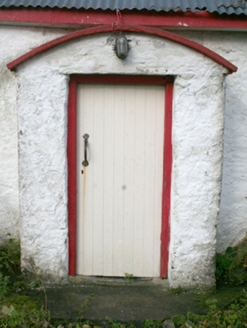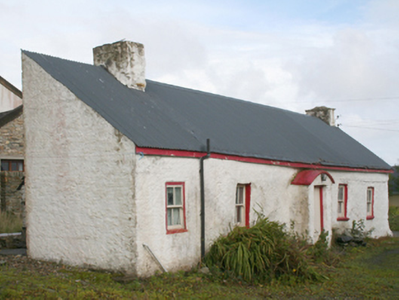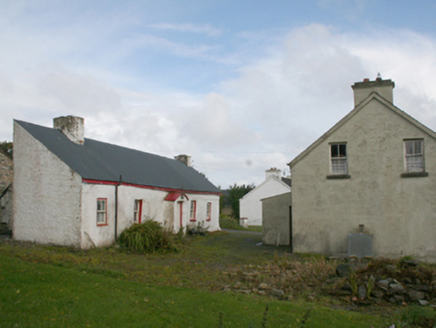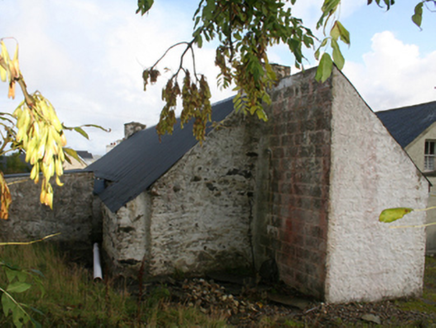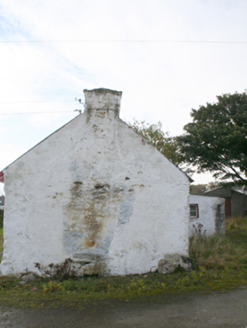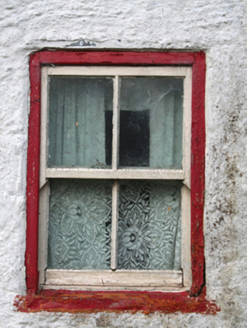Survey Data
Reg No
40900308
Rating
Regional
Categories of Special Interest
Architectural
Original Use
House
In Use As
House
Date
1800 - 1860
Coordinates
238571, 448880
Date Recorded
12/03/2013
Date Updated
--/--/--
Description
Detached four-bay single-storey vernacular house, built c. 1820 and extended c. 1900, having single-bay extension to south-west gable end, bed outshot to rear, single-storey kitchen return, and with windbreak porch to front having segmental head. Pitched corrugated-metal roof with rendered rubble stone chimneystacks to original gable ends, and with replacement rainwater goods. Limewashed rendered rubble stone walls, concrete block construction to extension to the south-west. Square-headed window openings with stone sills, and two-over-two pane horned timber sliding sash windows. Square-headed door opening to porch having battened timber door. Set back from road to the rear of later house (see 40903005), built c. 1920. Located to the north of Ballyliffin and to the south of Pollan Bay.
Appraisal
Although no longer in use as a dwelling, this appealing and relatively intact example of a vernacular house retains its early form and character, and is an appealing feature in the landscape to the north of Ballyliffin. Its integrity is enhanced by the retention of much of its salient fabric including timber sliding sash windows. Modest in scale, it exhibits the simple and functional form of vernacular building in Ireland. It retains some characteristic features of the vernacular tradition to the area, including a bed outshot to the rear and windbreak porch. The corrugated-cement roof to the dwelling indicates that this building was formerly thatched. This building was extended to the south-west bay a bay at some stage, the concrete block construction suggesting that this was altered in recent decades. The form of this building, having chimneystacks to the gable ends and a central doorway to the original building, suggests that this building is of the ‘direct entry’ type that is characteristic of the vernacular tradition in north-west Ireland. This house represents a fine surviving example of a once ubiquitous building type in the rural Irish countryside, and is a valuable addition to the vernacular heritage of County Donegal. It appears to have been replaced by a distinctive later house (see 4080900305), which is located adjacent to the south-east.
